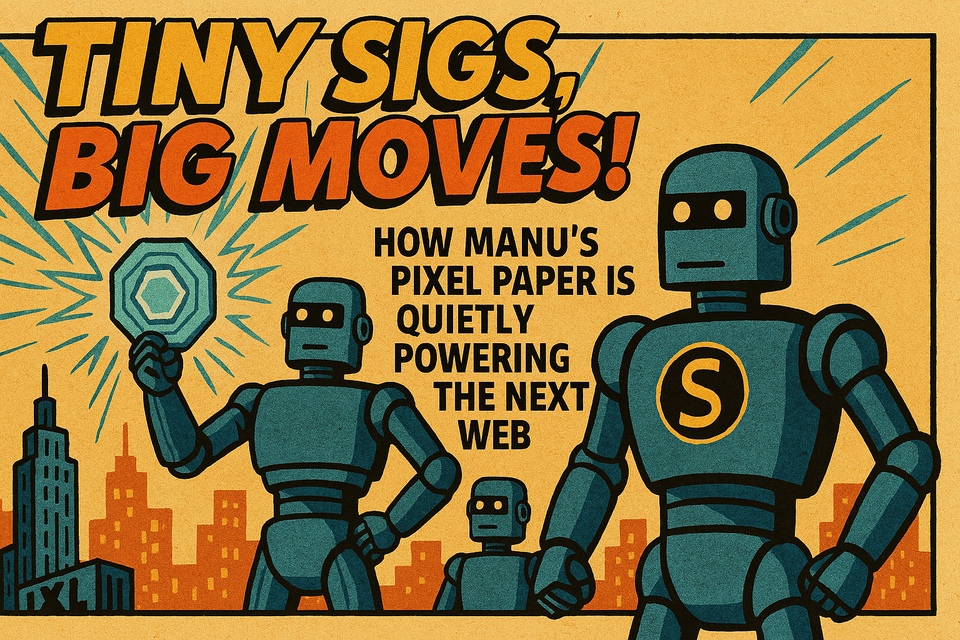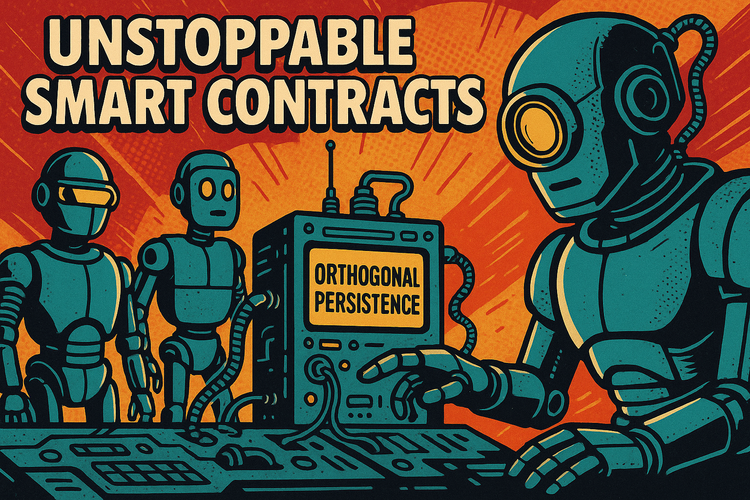Pixel Power: The Signature Behind Web3’s Future

“Forward secure. Compact. Non-interactive.” That’s not a new NFT drop — that’s just Pixel, the underdog hero of blockchain consensus, created by cryptographer Manu Drijvers and team. 🧠💥
While the crypto world argues over gas fees and memecoins, Manu was over at DFINITY and USENIX Security 2020 quietly dropping fire with his paper Pixel: Multi-signatures for Consensus.
The pitch? Replace clunky validator signatures with one clean, future-proof multi-signature. Less weight on-chain. Fewer verification headaches. And yep — it’s forward secure, so even if your keys get yeeted in a hack, past signatures are safe. 🔐
🧩 The Problem: Signatures, but Make It Smaller
Blockchains like the Internet Computer need validators to sign every single block. But if you’ve got N validators… that’s N signatures. Every. Time. Which bloats block size, verification time, and storage.
Imagine sending a group email and everyone hits "Reply All" with a big fat signature. That’s blockchain right now. 😩
Enter Pixel: Manu’s “group chat” where you only need one neat, collective sig — with zero back-and-forth. Validators sign in parallel, and everything gets smushed into one compact sig.
⚡ How It Works (Without Breaking Your Brain)
- Forward Security: After every signing round, private keys get rotated. Lose your key later? Your past is still clean. ✅
- Non-Interactive Aggregation: Validators don’t need to talk to each other. No secret channels. No complicated dance. Just sign and go. 🕺
- Compactness: A thousand validators? One signature. Try that with BLS or Schnorr without busting your node’s storage.
This combo’s like cryptographic kung fu. And Pixel is the black belt.
🧠 So What? Why Should You Care?
Because this isn’t just theory. This is Internet Computer-grade tech. The ICP blockchain — where Manu now builds — actually uses this stuff to run consensus at web speed.
And it’s not just DFINITY either. If you're serious about scalable Proof-of-Stake, these signature tricks are your secret weapon.
🗣️ As the paper puts it: “Pixel provides strong forward security and efficient non-interactive aggregation, ideal for blockchain consensus protocols.”
That’s researcher-speak for: your chain can run faster, store less, and be quantum-resilient all at once. 🧪🚀
🧵 TL;DR for the Timeline
- ✅ Manu Drijvers co-authored Pixel — a multi-signature scheme that shrinks consensus sigs into a single line.
- 🔐 It’s forward secure (past can’t be forged if future keys are compromised).
- 📦 It’s compact (1 sig instead of 1000).
- 🤫 It’s non-interactive (no validator group hugs needed).
- 🌐 It now lives in real world tech like the Internet Computer.
✨ Want to dive deeper?
Read the full paper here: PDF Link
Follow Manu on X: @manudrijvers
Want more crypto x research hot takes?
We got you. Every week. Every Day.
Stay Notoko...
💡 Subscribe to Notoko Bytes for more crypto chaos straight to your inbox! 🚀

Want to feature your brand on Notoko Bytes? 🚀 Contact us at ctrascend@gmail.com for sponsored posts!
Disclaimer
*The information and analysis provided in this article are intended for educational and informational purposes only and should not be considered as financial, investment, or professional advice. While our team strives to ensure the accuracy and reliability of the content, we make no representations or warranties of any kind, express or implied, about the completeness, accuracy, reliability, suitability, or availability of the information presented.
The content within this article may include opinions and forward-looking statements that involve risks and uncertainties. The blockchain and cryptocurrency markets are highly volatile, and past performance is not indicative of future results. Any reliance you place on the information presented is strictly at your own risk. Before making any investment decisions, we highly recommend consulting with a qualified financial advisor or conducting your own thorough research.
By accessing and using the information provided in this article, you acknowledge and agree that neither the authors, publishers, nor any other party involved in the creation or delivery of the content shall be held liable for any direct, indirect, incidental, consequential, or punitive damages, including but not limited to loss of profits, goodwill, or data, arising out of your use or inability to use the information provided or any actions you take based on the information contained within this section.*





